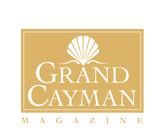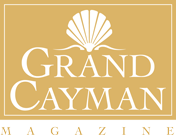It is hailed as the first symbol of national identity.
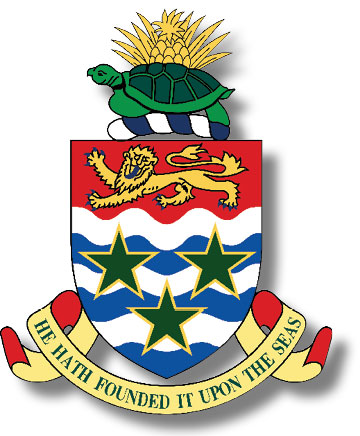 The Cayman Islands coat of arms has been in existence for 60 years, assigned to the territory by Queen Elizabeth II on May 14, 1958.
The Cayman Islands coat of arms has been in existence for 60 years, assigned to the territory by Queen Elizabeth II on May 14, 1958.
A series of celebrations is taking place throughout the remainder of 2018, and next year, to mark the ensign’s Diamond Jubilee.
The original Royal Warrant, which authorized the production of Cayman’s coat of arms, was destroyed by fire in 1972. A replica was recently prepared by Garter King of Arms at the College of Arms in England. It was unveiled at an anniversary celebration in May 2018, held at Durbar Court in the U.K. Foreign and Commonwealth Office headquarters in London.
The Cayman Islands London Office arranged for two facsimiles of the coat of arms to be produced, with one displayed in the London office and the other in Cayman.
The coat of arms, which appears on the Cayman Islands flag, symbolizes the island’s close historical connections with both the U.K. and Jamaica, as well as its seafaring and religious heritage.
The main elements on the coat of arms are a shield, a crested helm and motto. Three green stars set in the shield represent the three islands of Grand Cayman, Cayman Brac and Little Cayman. The stars rest on blue-and-white waves, representing the Caribbean Sea.
A prominent feature is a golden lion, a traditional symbol of Great Britain. It represents Cayman’s link with the U.K. It’s found at the top of the shield on a red background. Above the shield is a green turtle, a nod to Cayman’s turtling past as well as a reference to the original name of the islands, Las Tortugas. It sits on a blue-and-white thatch rope, representing the sea and Cayman’s thatch-rope making industry, once a source of revenue for many Caymanian families.
Behind the turtle is a pineapple, representing Cayman’s long-standing connection with Jamaica. Five golden pineapples are featured on Jamaica’s coat of arms.
The motto “He Hath Founded It Upon the Seas” is written on a scroll below the shield. This verse is taken from Psalms 24:2 of the Bible, which reflects the island’s Christian heritage and strong ties to the sea.
The coat of arms is featured on the Cayman Islands flag, which has the British Union Jack in its upper left-hand corner. The shield is encircled in a white disc in a blue field. The maritime ensign is similar but features a red field. Cayman-registered vessels fly the red Cayman ensign internationally, and foreign vessels in Cayman waters also fly this flag as a courtesy.
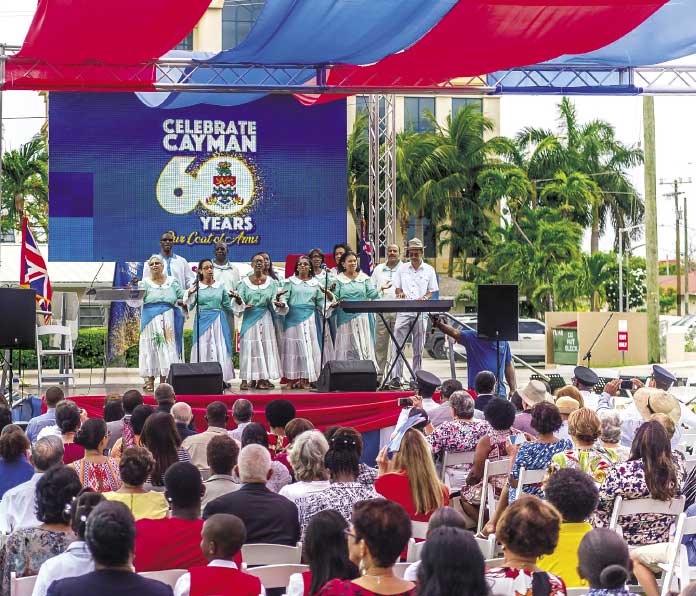
History at a glance
When the coat of arms was adopted in 1958, the Cayman Islands was a dependent of Jamaica, which was itself a British colony.
The administration of the country was overseen by a commissioner, who reported to the governor of Jamaica.
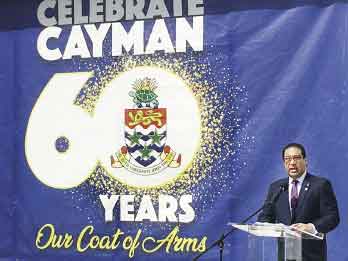 Commissioner Major Alan Hilliard Donald, who served from 1956-1960, played a central role in the development of the coat of arms by putting forward a proposal to adopt a crest for the Cayman Islands. It was approved by the Legislative Assembly of the Justices and Vestry on April 3, 1957.
Commissioner Major Alan Hilliard Donald, who served from 1956-1960, played a central role in the development of the coat of arms by putting forward a proposal to adopt a crest for the Cayman Islands. It was approved by the Legislative Assembly of the Justices and Vestry on April 3, 1957.
Government requested public input on its design. A letter from the Garter King of Arms in England noted the people of the Cayman Islands placed great importance on three key elements: the island’s connection with Britain; its connection with the sea; and a symbol for the three islands.
The granting of the coat of arms began the process of formally distinguishing the Cayman Islands from Jamaica. The island underwent several watershed moments after adopting the coat of arms, including the choice to remain part of the United Kingdom when Jamaica’s became independent in 1962.
Other significant milestones included: full suffrage recognized in 1958, giving women the right to vote and stand for election for the first time; introducing the first constitution on July 4, 1959; the passage of the Companies Law in 1960 that paved the way for the financial services industry; government’s purchase of 51 percent of Cayman Brac Airways in 1958, later becoming Cayman Airways, helping to strengthen the tourism industry; and introducing Cayman’s own currency in 1971.
These milestones were fundamental to the development of the islands, built on the foundation of the coat of arms.
















